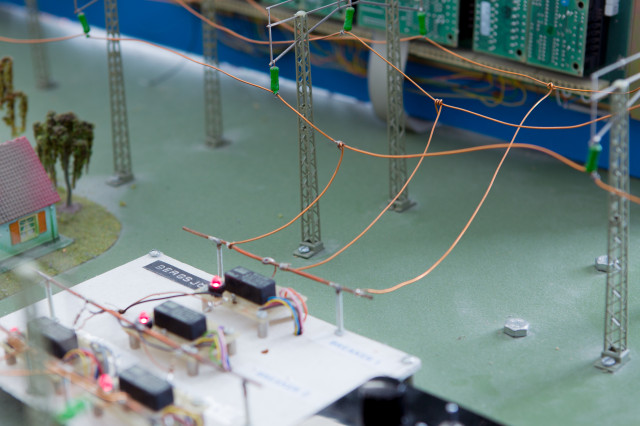- Electrical safety issues.
- Basic concepts of measurements: units and standards, traceability, uncertainty calculations, documentation.
- Measurement of static electrical quantities: introduction to digitalisation, the multimeter.
- Measurement of time-varying quantities: sampling, the oscilloscope.
- Electromagnetic compatibility (EMC).
- Measurement of time-varying quantities: sampling, aliasing, spectrum analysis.
- The computer in the measurement system: hardware configurations, software, virtual instruments.
- Sensors: physical principles, common types, fabrication technologies, applications.
EK1190 Measurement Technology 7.5 credits
This course has been discontinued.
Decision to discontinue this course:
No information inserted
Information per course offering
Course offerings are missing for current or upcoming semesters.
Course syllabus as PDF
Please note: all information from the Course syllabus is available on this page in an accessible format.
Course syllabus EK1190 (Autumn 2011–)Content and learning outcomes
Course contents
Intended learning outcomes
After the course, the student should be able to
- describe the basics of electrical safety: hazards and safety measures,
- describe the basic concepts of measurement technology and metrology, especially how measurement units are defined and how tractability is achieved,
- describe how electrical nose and disturbances are generated, propagated into the circuits, how this can be modelled and how the effects can be minimized,
- use oscilloscopes and multimeters to measure voltage, current and resistance both in the static and time-varying case,
- describe how several different types of AD-converters work and how this influences their performance
- draw a block diagram for a multimeter and describe how it handles other quantities than DC voltage and how this influences the performance,
- draw a block diagram for the oscilloscope and describe the effects of bandwidth, sampling frequency, input impedance and uncertainty in the instrument,
- use resistive sensors for measurement of temperature and strain,
- describe the basics of modern sensor technology and how sensors based on piezoelectricity, capacitance and inductance are used,
- describe the most basic strategies for computerized measurement systems, like AD-cards and different bus systems,
- describe the basic principles for spectrum analyzers and how the features of the analyzed signal show up in the time domain results ad the frequency desman results,
- be able to compute the standard uncertainty and confidence interval for a combined quantity based on uncertainty information of different kinds for the quantities that contribute to the combined quantity,
- document and in writing report experimental results,
- apply the above knowledge and abilities in problem solving and experimental work, both independently and when working in a group.
Literature and preparations
Specific prerequisites
Completed upper secondary education including documented proficiency in Swedish corresponding to Swedish B and English corresponding to English A. For students who received/will receive their final school grades after 31 December 2009, there is an additional entry requirement for mathematics as follows: documented proficiency in mathematics corresponding to Mathematics A.
Literature
Kompendier som säljs på studerandeexpeditionen.
Examination and completion
Grading scale
Examination
- LAB2 - Laboratory Work, 3.0 credits, grading scale: P, F
- TEN1 - Examination, 2.5 credits, grading scale: A, B, C, D, E, FX, F
- LAB1 - Laboratory Work, 2.0 credits, grading scale: P, F
Based on recommendation from KTH’s coordinator for disabilities, the examiner will decide how to adapt an examination for students with documented disability.
The examiner may apply another examination format when re-examining individual students.
If the course is discontinued, students may request to be examined during the following two academic years.
- Several smaller tests during the course. The theoretical teaching in each subsection will be concluded with a web-based test or a short written test.
- Laboratory assignments.
- The written exam at the end of the course is strongly related to the labs and includes lab reporting based on notes from the Lab exercises
Other requirements for final grade
Lab course 1: 2 labs including webbased tests, P/F, 2 ECTS credits.
Lab course 2: 3 labs including webbased tests, P/F, 3 ECTS credits.
Written exam, A, B, C, D, E, Fx, F, 2.5 ECTS credits.
Examiner
Ethical approach
- All members of a group are responsible for the group's work.
- In any assessment, every student shall honestly disclose any help received and sources used.
- In an oral assessment, every student shall be able to present and answer questions about the entire assignment and solution.
Further information
Course room in Canvas
Offered by
Main field of study
Education cycle
Supplementary information
The theoretical teaching in each subsection will be concluded with a web-based test or a short written test. The problems in the exam are strongly related to the labs.